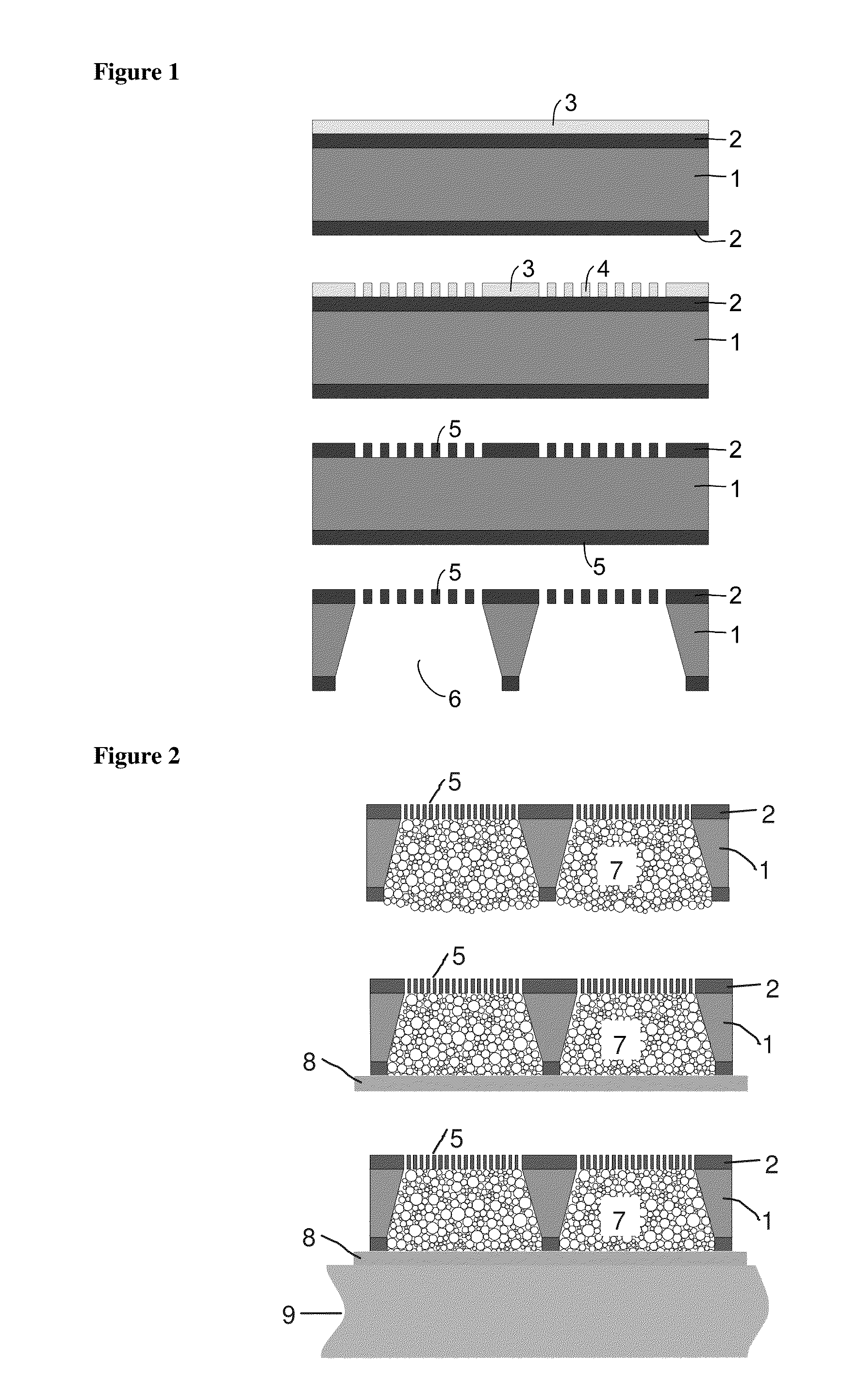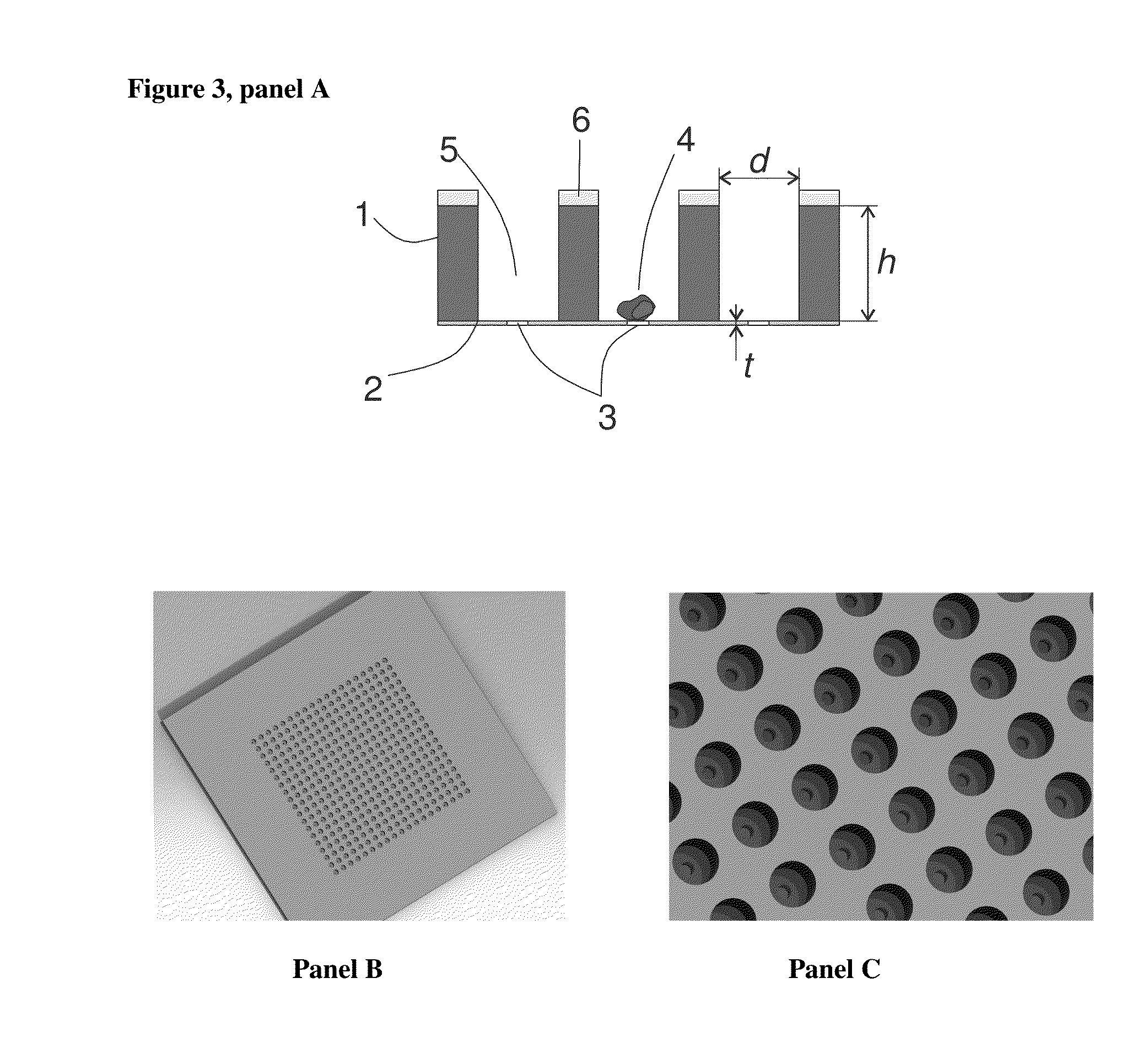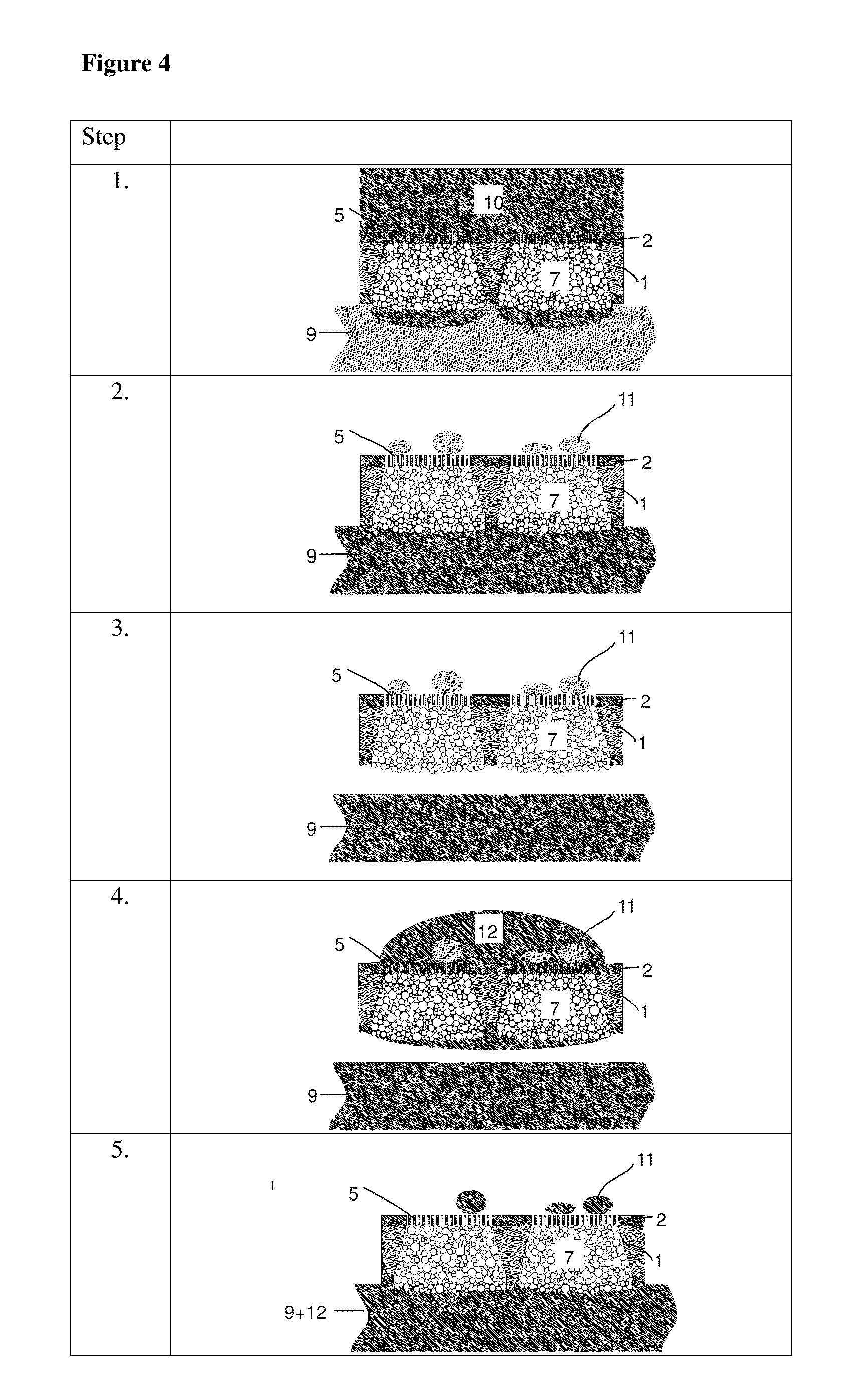Microsieve Diagnostic Device In The Isolation and Analysis of Single Cells
a single cell, microscopy technology, applied in the direction of fluorescence/phosphorescence, laboratory glassware, instruments, etc., can solve the problems of affecting the use of diagnostic devices, affecting the collection of cells and microorganisms in a relatively short time, and limiting the application of diagnostic devices. , to achieve the effect of promoting single cell capture and sample flow ra
- Summary
- Abstract
- Description
- Claims
- Application Information
AI Technical Summary
Benefits of technology
Problems solved by technology
Method used
Image
Examples
Embodiment Construction
[0053]The microwells described in the present invention provide an alternative system to the continuous flow paradigm currently used which has limited ability for further detailed analysis. The present invention utilizes a microwell plate for capturing and distributing single cells in individual microwells, comprising a microwell plate having microwells with a bottom plate, a sample supply side and a sample discharge side, wherein at least one individual well is provided with a bottom plate having at least one pore to pass sample liquid from the supply side to the discharge side. If one object or cell of interest is collected on the bottom plate of the well, the sample flow rate through that particular well becomes greatly reduced, minimizing the possibility that multiple cells or objects of interest can enter the same well. A single cell or object of interest should be able to close at least one pore of the well bottom plate, allowing for single cell capture. The base of every well...
PUM
| Property | Measurement | Unit |
|---|---|---|
| Fraction | aaaaa | aaaaa |
| Pore size | aaaaa | aaaaa |
| Pore size | aaaaa | aaaaa |
Abstract
Description
Claims
Application Information
 Login to View More
Login to View More - R&D
- Intellectual Property
- Life Sciences
- Materials
- Tech Scout
- Unparalleled Data Quality
- Higher Quality Content
- 60% Fewer Hallucinations
Browse by: Latest US Patents, China's latest patents, Technical Efficacy Thesaurus, Application Domain, Technology Topic, Popular Technical Reports.
© 2025 PatSnap. All rights reserved.Legal|Privacy policy|Modern Slavery Act Transparency Statement|Sitemap|About US| Contact US: help@patsnap.com



